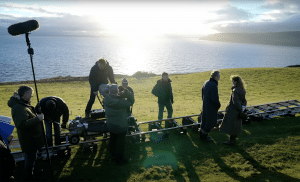When you’re directing a movie, you’re in charge of the heartbeat of the project and, by extension, the heartbeat of the audience.
There’s a natural rhythm to the world. Systems, left unperturbed, settle down into steady states. Things accelerate; things slow down. If you breathe in, you need to breathe out. If you put a gun on the mantel in the first act, it needs to go off in the third. These sorts of rules. As a director, it’s up to you to manage this pace. You get to set the audience’s resting pulse rate. Use this power responsibly.
The New Math: Three Is Four
On a macro level, we’re talking about the three-act structure. There’s only a gazillion books out there that can break it down for you, but fundamentally, it’s four parts of your film. That’s right. To get three, you need four: four equal sections, collected into three parts — one on either side of a double-set in the middle.
Without wandering too far into the screenplay weeds, you establish the world in the first act, upend it and progress through a series of trials in the second (adding new characters and situations along the way), and then bring everything to a conclusion in the third. You don’t introduce anything new in the third act. All the pieces are on the board by this time, so to speak. Now you’re just showing off your moves.

Here’s an activity you can do at home: sit down and work the time codes on the next film you watch. How long is the run time (minus the credits, of course)? Where are the act breaks, according to the 3/4 math? Does the film hit those marks?
Of course it does, because this is the natural rhythm of story. This is what we expect as viewers, whether we’re conscious of it or not. And when you break this rhythm, you unsettle the viewer. Something is off for them, but they don’t quite know why. They start to fidget in their seats. They look at their watches and wonder if they’ll be home in time for happy hour. If you break these natural rhythms, make sure you’re doing so consciously and in support of the project.
The Metronomic Insistence of a Well-Crafted Watch
Look, there’s a reason why Die Hard is a stone-cold classic, and it’s not just because Alan Rickman redefined the sexy bad guy trope. The script is a masterclass in pacing, and not just in its act structure. If you break the film down into five-minute chunks, you’ll find each chunk neatly encapsulates an element of the plot and pushes the story forward.
And sure, the sequels broke with this template in various ways because they were under the impression that they had to be different, but come on, we were showing up because we liked what we saw the first time. (Of the sequels, it’s Live Free or Die Hard that holds up the best, mostly because it sticks to the template and replaces all those unused floors in the Nakatomi Building with various locations on the East Coast.)
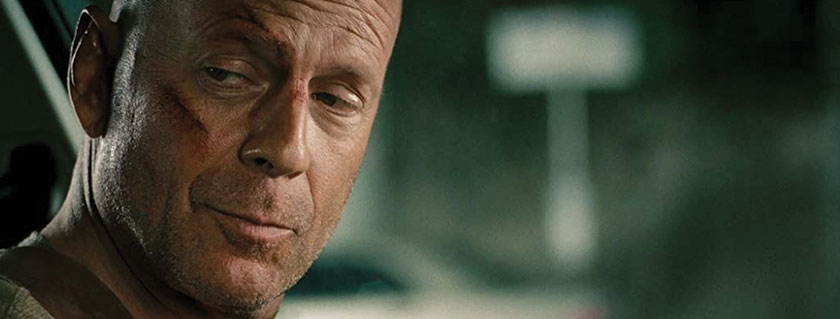
The Long Goodbye
Anyway, if you deviate from the natural rhythm of the world, you do so with intent. Like Nicolas Winding Refn, who never shoots a scene without letting the camera run an extra forty-eight seconds or so. Refn’s classic crime drama Drive, based on a sparse and atmospheric book by James Sallis, has an incredible cast that you could watch for hours — and in some scenes, that’s how it feels.
Ryan Gosling, to his credit, never fidgets when Refn lingers. It’s Oscar Isaac — as the psychotic gangster, Standard — who can’t stand the waiting. Which, again, is part of the tension Refn creates by letting everything run a few seconds long. No one has to say a word; you can feel the pressure building.
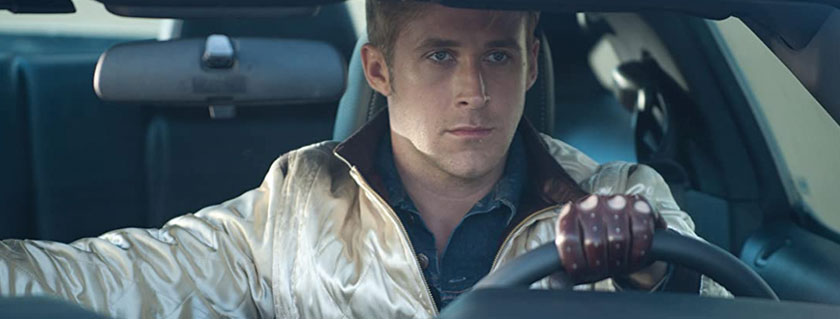
As a sidenote, it’s not hard to see Driver as a prototype of K, the character Gosling plays in Denis Villeneuve‘s Blade Runner 2049. These characters aren’t “empty” or “static,” they’re perpetually waiting. And, as we know, waiting is the hardest thing in the world.
Like a Chipmunk on Crack
And then there is Michael Bay, who clearly subsists on a diet of quad-shot espressos and licorice wheels. The camera in a Michael Bay film is constantly in motion. Two people standing in a room, delivering a bunch of important exposition? Bay won’t shoot it in a series of static cuts between the pair. He’ll shoot it as a series of whirling tracking shoots that rotate all the way around the actors. At least twice. Any one of the chase scenes in Ambulance, his latest adrenaline-fueled effort, required at least a half-dozen drones, fifteen support vehicles, and at least one helicopter shot from a half-mile away. It makes for an utterly relentless barrage of visual information, and to Bay’s credit, you never lose track of what is actually happening in the scene.
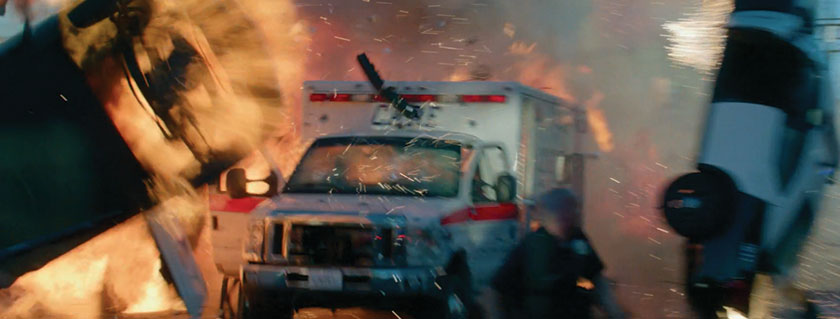
But, when the camera does stop moving, the dramatic tension of the scene goes through the roof. Why? Because the viewer’s attention is still trucking along at eighty million miles an hour. We need something to happen, and nothing’s happening, and OMG! Why isn’t the camera moving?
Speed Walking
It’s common practice to think of one page of a script as the equivalent of one minute of film. Scripts tend to be light on scene direction because that’s just wasting time talking about the wallpaper, and the director is going to come up with his own interpretation anyway, so why not stick to snappy dialogue?
Which brings us to folks like David Mamet and Aaron Sorkin, who both write ultra-dense scripts. In order to film a script like this and not turn it into a six-hour slog, you need to perfect the “walk and talk.” Thomas Schlamme, the go-to director during the first season of Sorkin’s The West Wing, perfected a Michael Baysian-style of camera movement — through multiple rooms of the White House, thank you very much — while the characters plowed through pages of dialogue.
You gotta know when to move, man. You gotta know.
Swooping and Framing
Which bring us in a cinematically sweeping crane shot around to Kenneth Branagh and his recent version of Agatha Christie‘s classic mystery Death on the Nile. Now, Branagh could “Enter: stage right” before he was out of short pants, and his films are always full of actors well-versed in theater. This frees him up to do ridiculously complicated tracking shots that follow the actors as they emote all over the scenery while sailing on a boat down the middle of the Nile. Pacing, dear friends, is a matter of controlling the speed of the narrative, whether it’s in the cadence of the dialogue, the motion of the camera, or both.
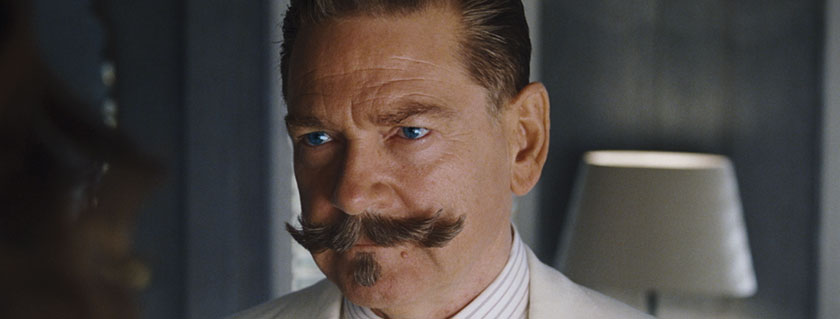
And typically, when Branagh’s camera finally comes to a stop in Death on the Nile, it’s on a tight shot of Branagh’s Hercule Poirot and that masterfully improbable double-layer mustache, which is damn near its own character.
But that’s another conversation for another time.
Cover image via Warner Bros.
Every Friday is Freebie Friday at Videvo. Help yourself to free background footage, looping video, nature footage, and more!
And if you need a study break, a think break, or even just a break from it all, check out our Videvoscapes. Each one is packed with high-definition background footage and paired with downtempo beats for a truly chill experience.



